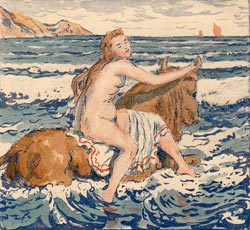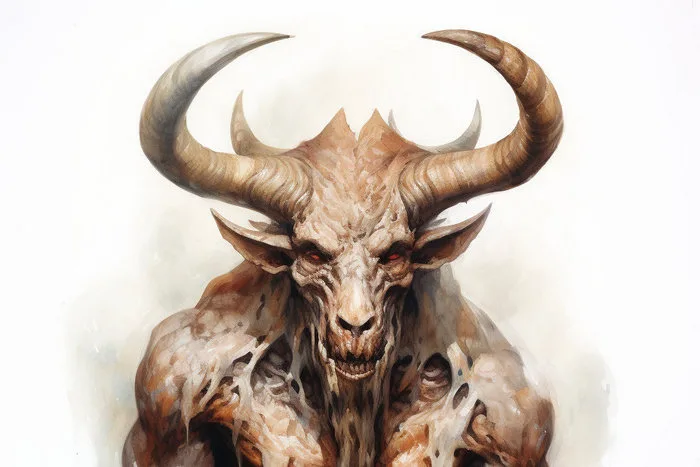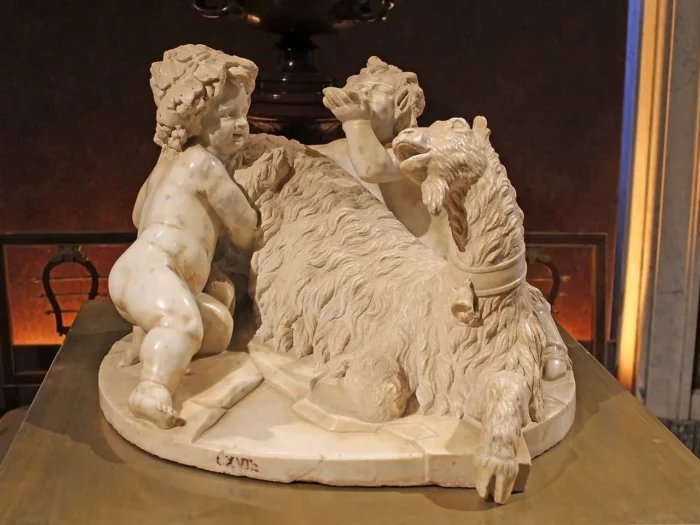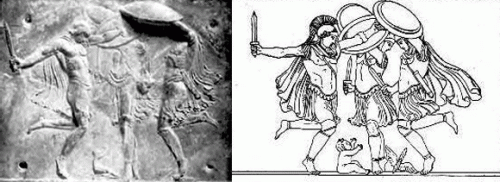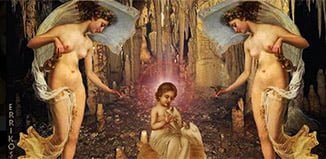Talos, the bronze giant talos protects Crete
Talos
Talos was a mythical bronze giant, the first robot in history, which protected Minoan Crete from would-be invaders. Talos is one of the best-loved legendary characters in the ancient world and one of the most important Greek myths.
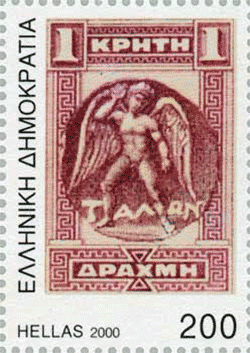
How and why Talos was created
Talos was not born but made, either by Zeus himself or, according to other versions of the myth, on Zeus’s orders, by the ingenious Daedalus or Hephaestus, god of fire and iron.
The giant Talos, a golden dog which never lost its prey and a quiver of arrows which never missed their target were the three gifts of Zeus, the greatest of the gods, to his beloved Europa, who gave him three sons: Minos, the legendary king of Knossos, Radamanthys and Sarpedon.
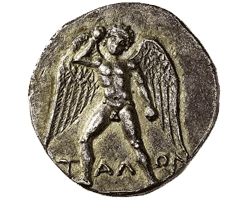
On a coin found in the Minoan palace of Phaistos, Talos is depicted as young, naked and winged. The wings may explain his great speed, as he could travel round the whole of Crete three times a day.
Externally, Talos resembled an enormous man whose body was made of bronze. He had a single vein of molten metal which gave him life, running from his neck to his ankles. A bronze peg in his ankle stopped the life-giving ichor from pouring out.
Talos, unsleeping guardian of Crete
Talos’s task was to defend Crete from invaders, circling the island three times daily. You see, no traces of walls protecting cities have been found in Crete. This led Evans, the excavator of Knossos, to speak of the famous Minoan peace, the Pax Minoica. It seems Minos felt secure with his mighty guardian.
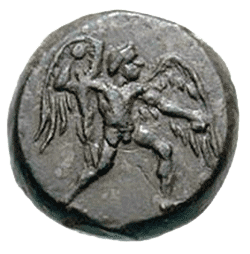
Talos did not allow any enemy ships to approach, hurling massive rocks to sink the wooden ships of those who dared to threaten Crete. If any managed to escape these and set foot on land, a nasty surprise lay in store for them.
Talos entered a fire until his bronze body was red hot. Then he clasped his enemies in a tight embrace, burning them to death.
There is a tradition that certain Sardonians (from Sardinia in Italy) met this fiery end, and their bodies were found with their mouths wide open in agony and horror.
The legend says that whenever Talos crushed or burnt the enemies of Crete, he broke into laughter. This may be the origin of the expression “sardonic laughter”, the scornful mirth of the winner of a contest who boastfully mocks the losers.
Talos, protector of the law in Crete
Talos had a duty to protect Crete not only from enemies but also from any kind of injustice. He went round all the villages of the island three times a year, carrying on his back bronze tablets inscribed with the divine laws. The aim was to ensure that the laws were kept in the provinces.
The bronze tablets he bore may be a later attempt at a logical explanation of why he was thought to be made of bronze.
In the cities justice was dispensed by Rhadamanthys. After their deaths, he and his brother Minos became judges of the souls in Hades, symbols of absolute justice.
The death of Talos
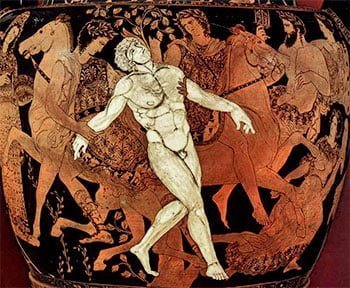
Talos managed to defeat the enemies of Crete for many years, until his time finally came. Of course a bronze “robot” could not be killed by arrows or other weapons, as it was invulnerable, nor could it succumb to old age. Talos was killed by trickery.
The legendary ship Argo, bearing Jason, Medea and the Argonauts, had a perilous journey past the Hellespont. On reaching the south coast of Crete, the Argonauts wanted to beach the ship, rest and obtain supplies.
Let’s not forget that they had already been to Colchis, where Jason stole the Golden Fleece with the aid of the witch Medea, the daughter of King Aetes of Colchis.
On leaving, he took with him both the fleece and his beloved Medea. The tale tells that Medea was the niece of Pasiphae, the wife of Minos, i.e. the queen of Minoan Crete, which may be why they chose Crete as a stopping-place on their legendary voyage.
On approaching the shore, however, they were faced with the bronze giant, who hurled rocks at them. The ship was in danger of sinking when Medea took over. She went to the side of the ship and began to talk to Talos. Chanting spells and promising him eternal life, she deceived the guileless Talos and persuaded him to remove the bronze peg from his ankle. All his “blood” ran out onto the ground and he fell lifeless.
There is a second, very similar version, in which Medea looked Talos deep in the eyes and used her magic to drive him mad. As he ran up and down in a frenzy, he struck his vulnerable point, the bronze peg snapped and he fell dead.
What Talos symbolises through myth
The bronze hero Talos symbolises technological development in the field of metalworking in prehistoric and Minoan times. The Minoans were so advanced that they imagined a bronze superhero to protect them.
Another major attribute of Talos was as an upholder of justice. This shows how important justice was in ancient Crete. It was no coincidence that the laws were considered divine; Minos received them from his father, Zeus, and so they had to be obeyed.
The Talos of Athens
Although Talos was a figure of Cretan mythology, he had an Athenian namesake. This is a later Attic myth in which the Athenian son of Perdix was a nephew of the ingenious inventor Daedalus.
As Talos grew up, working as his uncle’s apprentice, he became so clever and inventive that Daedalus feared he would become a greater craftsman than himself. It is said that Talos was so skilful that he managed to saw a very thin piece of wood using the jawbone of a snake.
In order to retain his position as master architect and greatest inventor, Daedalus pushed Talos off the Acropolis. He was exiled from Athens for the murder, which is how he ended up in Crete, where he became famous for building the Palace of Knossos and designing the Labyrinth to imprison the mythical Minotaur.
- Talos destroys the ship of the Argonauts – The death of Talos, scenes from a movie of 1963
© explorecrete.com All Rights Reserved. Reproduction or copying without permission is prohibited.

